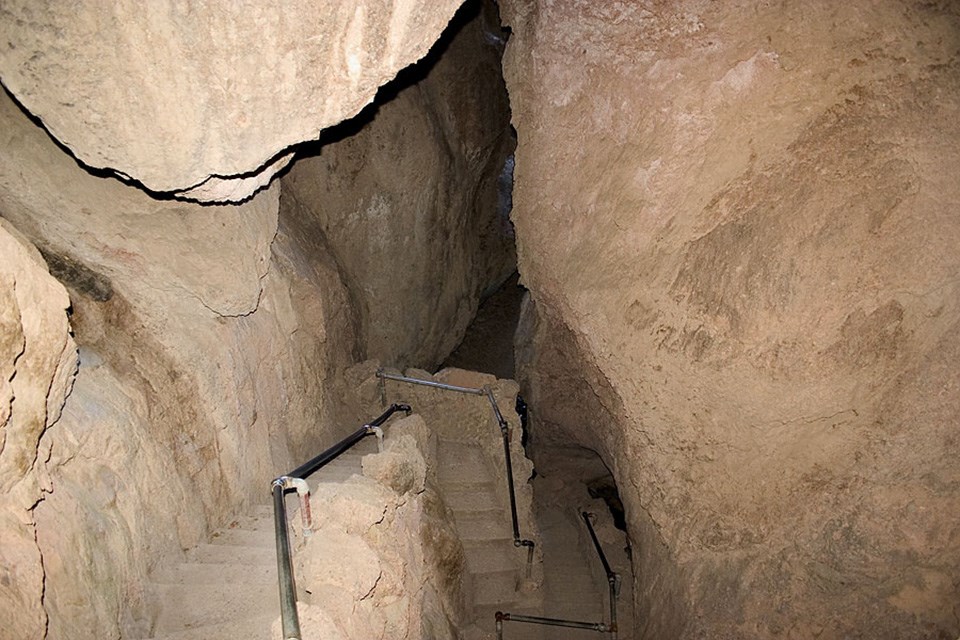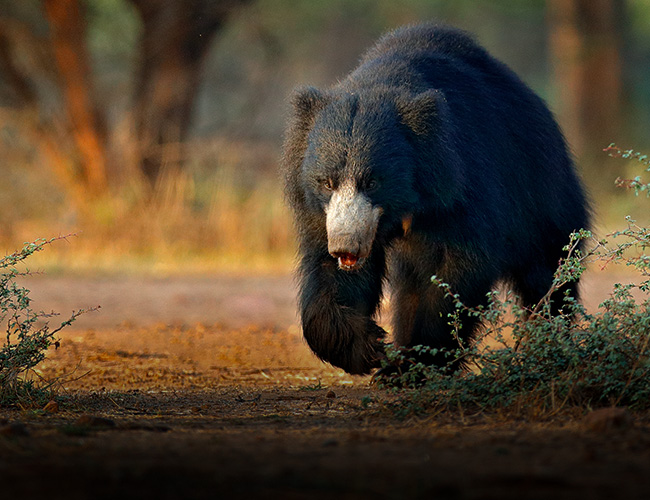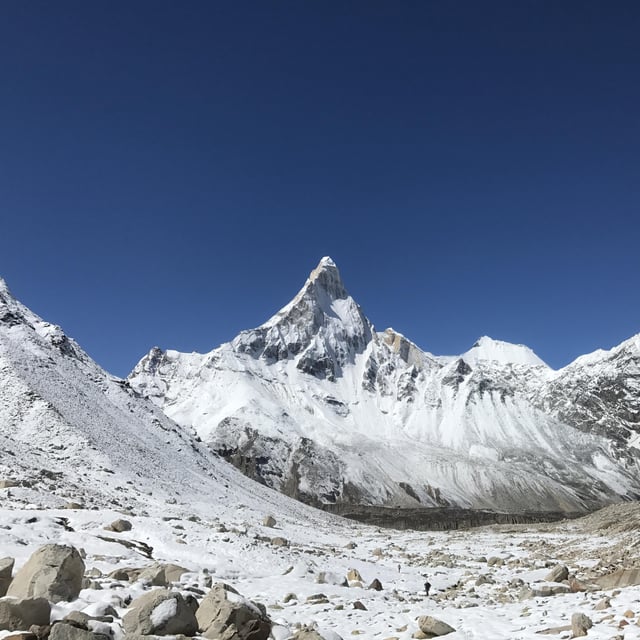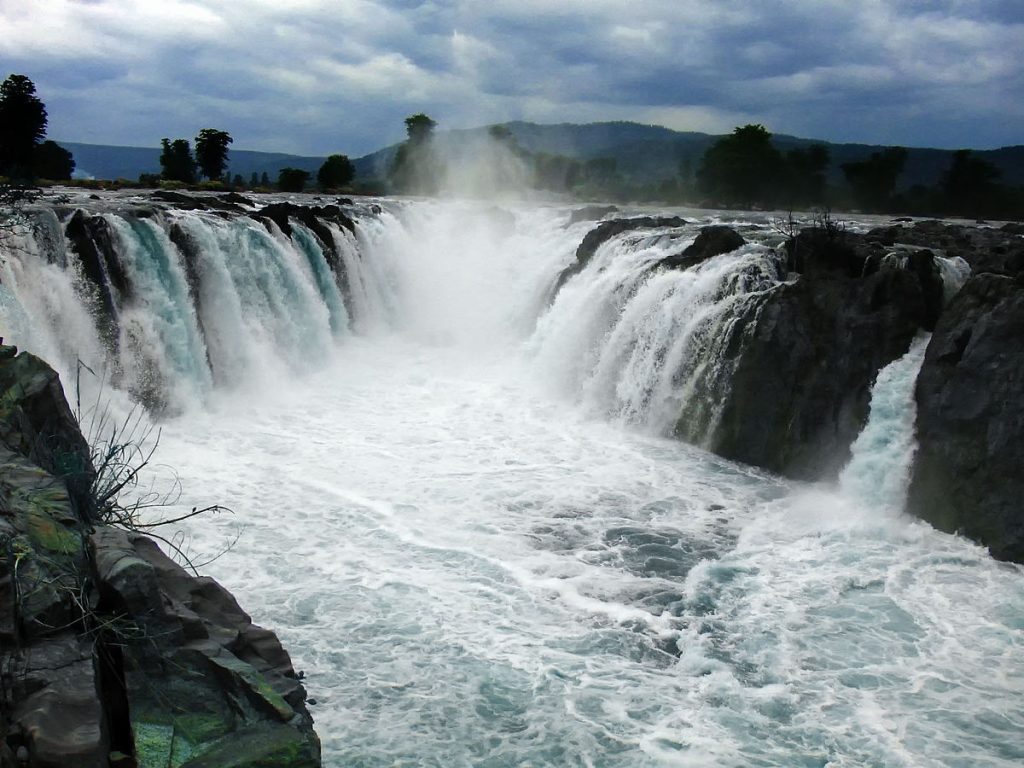Kumbh Mela is one of the largest religious gatherings in the world. It is a significant event in Hindu culture, drawing millions of devotees.
Held every 12 years, Kumbh Mela rotates among four holy cities in India. These cities are Allahabad, Haridwar, Ujjain, and Nashik. The festival is known for its sacred rituals and mass pilgrimages. Pilgrims gather to take a holy dip in the river, believed to cleanse sins and bring salvation.
The festival’s origins date back centuries, rooted in ancient mythology. The gathering symbolizes unity, devotion, and spiritual renewal. Rich in tradition, Kumbh Mela offers a vibrant glimpse into India’s cultural heritage. Whether you’re a traveler or a spiritual seeker, this event is a unique experience worth exploring.

Credit: www.cnn.com
Introduction To Kumbh Mela
The Kumbh Mela is one of the largest religious gatherings in the world. Held in India, this festival attracts millions of pilgrims. They come to take a holy dip in sacred rivers. The event rotates among four cities: Allahabad, Haridwar, Nashik, and Ujjain. These cities hold the festival every 12 years. It is a sight to behold and an experience to cherish.
Historical Significance
The origins of Kumbh Mela date back to ancient times. It is mentioned in Hindu scriptures. According to legends, gods and demons fought for a pot of nectar. This pot, known as “Kumbh,” contained the nectar of immortality. Drops of this nectar fell at four locations on Earth. These locations are the present-day cities where Kumbh Mela is held.
The festival has been celebrated for centuries. It is a symbol of faith and spirituality. Historical texts and records mention the gathering. People from different parts of India attend. The event has seen changes over time. Yet, its core essence remains the same.
Cultural Importance
Kumbh Mela is a melting pot of diverse cultures. People from various regions and backgrounds come together. They share their traditions and customs. This creates a rich tapestry of cultural exchange. The festival is not just about religious rituals. It is a celebration of life, unity, and diversity.
Many activities take place during the festival. There are spiritual discourses, music, and dance performances. Devotees engage in prayers and meditation. The atmosphere is vibrant and filled with positive energy. Kumbh Mela also showcases the art and craft of the region. Stalls selling handmade items are a common sight. Pilgrims and tourists alike enjoy the cultural feast.
Key Locations
The Kumbh Mela is a grand festival celebrated in India, attracting millions of devotees from around the world. It takes place every twelve years at four sacred locations. Each site holds a unique significance and offers a different experience. Let’s explore the key locations where this spiritual event unfolds.
Allahabad
Allahabad, also known as Prayagraj, is the most famous location for the Kumbh Mela. This city lies at the confluence of three rivers: the Ganges, the Yamuna, and the mythical Saraswati. The Triveni Sangam is where devotees believe that bathing washes away all sins. Can you imagine standing there, feeling the sacred water flow around you?
During the Kumbh Mela, Allahabad turns into a city of tents. Pilgrims, sadhus, and tourists set up camp along the riverbanks. The atmosphere is electric, full of chants, rituals, and a sea of orange robes. It’s like a spiritual carnival!
Haridwar
Haridwar, nestled at the foothills of the Himalayas, is another significant location for the Kumbh Mela. The holy Ganges flows through this ancient city, providing a picturesque backdrop for the festival. Haridwar means “Gateway to God,” and it truly feels like you’re stepping into a different realm.
The Har Ki Pauri ghat is the main attraction here. Legend has it that Lord Vishnu left his footprint at this spot. During Kumbh Mela, thousands gather to take a dip in the river, believing it will cleanse their souls. Have you ever experienced such devotion?
Ujjain
Ujjain, located in the heart of Madhya Pradesh, is another key location for the Kumbh Mela. This city is home to the famous Mahakaleshwar Temple, dedicated to Lord Shiva. The Shipra River, which flows through Ujjain, is considered to be blessed by the gods.
Ujjain’s Kumbh Mela is known as Simhastha. It’s a unique blend of spirituality and culture. You’ll find astrologers, scholars, and yogis sharing their wisdom. The riverbanks become a stage for various religious performances. Have you ever seen a spiritual play?
Nashik
Nashik, in the state of Maharashtra, is the fourth location for the Kumbh Mela. The Godavari River flows through this city, making it another sacred site for the festival. Nashik’s Kumbh Mela is known for its vibrant and colorful atmosphere.
The Ramkund area is the focal point of the festivities. It is said that Lord Rama bathed here during his exile. Pilgrims gather to take a holy dip and perform rituals. The city is adorned with beautiful decorations, creating a mesmerizing sight. Isn’t it amazing how faith transforms a place?
Each of these locations offers a unique experience, steeped in history and spirituality. Whether you’re drawn to the confluence of rivers in Allahabad, the gateway to the Himalayas in Haridwar, the cultural heart of Ujjain, or the vibrant colors of Nashik, the Kumbh Mela promises an unforgettable journey for the soul.
Rituals And Traditions
Welcome to the mesmerizing world of Kumbh Mela! This grand festival is not just about the gathering of millions. It’s a vibrant tapestry of rituals and traditions that have been passed down through generations. Let’s dive into some of the most iconic practices that make Kumbh Mela an extraordinary experience.
Holy Dip
The Holy Dip is perhaps the most significant ritual at Kumbh Mela. Pilgrims believe that bathing in the sacred rivers during Kumbh Mela cleanses them of their sins and grants them salvation. The rivers—Ganga, Yamuna, and the mythical Saraswati—are thought to possess divine powers during the festival.
Imagine standing on the banks of the river as the first rays of the sun dance on the water. The air is filled with chants and hymns. People from all walks of life immerse themselves in the holy waters, seeking purity and spiritual bliss. It’s a sight to behold! Even if you’re not taking a dip yourself, witnessing this ritual is an experience that will stay with you forever.
Aarti Ceremonies
At dusk, the riverbanks transform into a place of devotion and spectacle with the Aarti ceremonies. Priests perform Aarti, a ritual of worship involving fire, water, and flowers, to honor the deities. The flickering flames of the lamps, the sound of conch shells, and the aroma of incense create a magical ambiance.
One evening, I found myself at the banks during Aarti. The energy was palpable. As the priests raised the lamps and the crowd chanted in unison, I felt a profound sense of peace. It’s not just a ritual; it’s a celebration of faith and community. If you ever visit Kumbh Mela, make sure to attend an Aarti ceremony—you won’t regret it!
Sadhus And Saints
No discussion of Kumbh Mela is complete without mentioning the Sadhus and Saints. These holy men and women are the spiritual backbone of the festival. They come from various sects, each with unique practices and appearances.
During my visit, I had the chance to speak with a Sadhu. His wisdom and simplicity were truly inspiring. Sadhus renounce worldly possessions and dedicate their lives to spiritual pursuits. They are often seen meditating, performing rituals, or engaging in philosophical discussions.
Seeing these revered figures is like stepping into another world. Their presence adds a mystical dimension to the festival. Whether you’re seeking spiritual guidance or just curious about their way of life, interacting with Sadhus and Saints is a highlight of Kumbh Mela.
| Ritual | Description |
|---|---|
| Holy Dip | Bathing in sacred rivers to cleanse sins. |
| Aarti Ceremonies | Evening worship rituals involving fire and chants. |
| Sadhus and Saints | Holy men and women who offer spiritual guidance. |
Whether you’re a devout pilgrim or an intrigued traveler, the rituals and traditions of Kumbh Mela are sure to leave a lasting impression. So, pack your bags, open your heart, and get ready to immerse yourself in the magic of this incredible festival!
Major Events
Kumbh Mela is one of the world’s largest religious gatherings. Millions of devotees come together to participate in the major events. These events hold great spiritual significance. Let’s explore some of the key happenings during Kumbh Mela.
Shahi Snan
The Shahi Snan, or royal bath, is the most important ritual. It takes place on auspicious days. Devotees believe that bathing in the holy river purifies their souls. Saints, sadhus, and pilgrims take this sacred dip. The sight of thousands bathing together is truly mesmerizing.
Religious Processions
Religious processions are another major highlight. They feature various sects of sadhus. Each sect has its unique style and tradition. The processions are colorful and vibrant. Drums, chants, and hymns fill the air. The atmosphere becomes electric with devotion.
Cultural Programs
Cultural programs offer a glimpse into India’s rich heritage. They include folk dances, music, and plays. These performances celebrate the diverse traditions of India. Visitors get a chance to experience the local culture. The evenings are lively with these engaging events.
Travel Tips
Planning a trip to the Kumbh Mela can be both exciting and overwhelming. With millions of pilgrims gathering, the logistics can seem daunting. But don’t worry! Here are some essential travel tips to help you navigate the world’s largest spiritual gathering with ease. Whether it’s choosing the best time to visit, finding the right accommodation, or ensuring your safety, we’ve got you covered.
Best Time To Visit
The Kumbh Mela is held at different locations, and the dates vary. However, the best time to visit is usually during the main bathing days. These days are considered the most auspicious, and the energy is palpable. Avoid the peak days if you’re not a fan of huge crowds. A visit in the early morning hours or late evenings can offer a more serene experience.
Here’s a quick look at the key bathing dates:
| Date | Event |
|---|---|
| January 14 | Makar Sankranti |
| February 4 | Mauni Amavasya |
| March 11 | Maha Shivratri |
Accommodation Options
Finding a place to stay during Kumbh Mela can be a challenge due to the sheer number of visitors. Here are some options to consider:
- Tents: Many organizers offer tented accommodations. These range from basic to luxury tents with all amenities.
- Hotels: Book well in advance if you prefer the comfort of a hotel. Nearby cities like Allahabad and Haridwar have various options.
- Ashrams: Some ashrams provide free or low-cost accommodation to pilgrims. This can be a great way to experience the spiritual side of the event.
It’s wise to book your accommodation as early as possible, as places fill up quickly.
Safety Measures
With such a vast gathering, safety is paramount. Here are some tips to keep in mind:
- Stay Hydrated: Carry water with you at all times. Dehydration can be a real issue, especially in the heat.
- First Aid Kit: Bring a small first aid kit. Basic items like band-aids, antiseptic, and pain relievers can be very handy.
- Keep Valuables Safe: Use a money belt or a secure bag to keep your valuables close to you. Pickpocketing can be a problem in crowded areas.
- Emergency Contacts: Have a list of emergency contacts, including local police and your country’s embassy. It’s better to be prepared.
Always stay alert and aware of your surroundings. If you’re traveling in a group, decide on a meeting point in case anyone gets lost.
By following these tips, you can ensure a memorable and safe experience at the Kumbh Mela. Happy travels!
Local Cuisine
Kumbh Mela is not just a spiritual gathering. It is also a culinary paradise. The local cuisine during the festival is rich and diverse. From savory street food to mouth-watering specialty dishes, there is something for everyone.
Street Food
The streets during Kumbh Mela are lined with food stalls. These stalls offer a variety of delicious snacks. You can start with ‘Pani Puri,’ a popular street food. It is a crispy, hollow ball filled with spicy water and tamarind chutney. ‘Aloo Tikki’ is another favorite. It is a fried potato patty served with tangy chutneys. Do not miss the ‘Chole Bhature.’ This dish includes spicy chickpeas paired with deep-fried bread. Every bite will leave you craving for more.
Specialty Dishes
Kumbh Mela also showcases some unique specialty dishes. ‘Kachori Sabzi’ is a must-try. It is a stuffed, fried bread served with spicy potato curry. Another specialty is ‘Malpua,’ a sweet pancake dipped in sugar syrup. ‘Baati Chokha’ is also popular. It features baked wheat balls served with mashed potatoes and eggplant. These dishes reflect the rich culinary heritage of the region. They are prepared with love and traditional recipes.
Shopping And Souvenirs
Shopping at Kumbh Mela is an exciting experience. The fair offers unique items. Visitors can find traditional handicrafts and religious items. These make perfect souvenirs to remember the pilgrimage.
Handicrafts
Kumbh Mela showcases beautiful handicrafts. Artisans from all over India gather here. They bring their best work to display and sell. You can find intricate pottery, handwoven textiles, and wooden carvings. Each piece tells a story of Indian culture and tradition. These handicrafts make wonderful gifts and decor items.
Religious Items
Religious items are a big part of the shopping experience at Kumbh Mela. Devotees can buy idols, prayer beads, and sacred books. These items hold great significance. They serve as a reminder of one’s spiritual journey. Many stalls also offer holy water from the Ganges. This is a cherished item for pilgrims. Carrying these sacred items home is a way to keep the blessings of Kumbh Mela close.

Credit: www.nationalgeographic.com
Impact On Local Economy
The Kumbh Mela is one of the largest religious gatherings in the world. It attracts millions of pilgrims and tourists to the host cities. This influx of visitors has a significant impact on the local economy. The event not only boosts tourism but also creates numerous economic opportunities for the residents.
Tourism Boost
During the Kumbh Mela, hotels and guesthouses see a surge in bookings. Local businesses benefit from the increased foot traffic. Restaurants, shops, and transportation services experience higher demand. Many visitors buy local crafts and souvenirs, contributing to the economy.
The event also puts the city on the global map. This attracts international tourists and media attention. The city’s infrastructure often sees improvements. Roads, public facilities, and services get upgraded to handle the large crowd.
Economic Opportunities
The Kumbh Mela creates jobs for local people. Temporary employment opportunities arise in various sectors. Hospitality, retail, and transportation businesses hire extra staff. Street vendors and small businesses see higher sales. Artisans and craftsmen sell more of their products.
Local government and organizers invest in the city’s infrastructure. This boosts the construction industry. Public works projects improve the city’s facilities. These improvements benefit the residents long after the event ends.

Credit: www.ndtv.com
Frequently Asked Questions
Where Is The Next Kumbh Mela In 2025?
The next Kumbh Mela in 2025 will be held in Prayagraj, Uttar Pradesh. This major Hindu festival attracts millions of pilgrims.
Why Kumbh After 144 Years?
Kumbh Mela occurs every 12 years. The Mahakumbh, a larger event, happens after 144 years, based on astrological calculations and planetary positions.
How Many Years Left For Kumbh Mela?
The next Kumbh Mela will be in 2025. This major Hindu festival is held every 12 years.
What Are The 4 Places Of Kumbh Mela?
The four places of Kumbh Mela are Prayagraj, Haridwar, Ujjain, and Nashik. These cities host the festival.
Conclusion
Kumbh Mela is a truly unique and spiritual event. Millions gather to celebrate, pray, and connect. The festival’s rich traditions and vibrant atmosphere make it unforgettable. Visiting Kumbh Mela offers a chance to experience deep cultural and spiritual moments. The journey enriches your understanding of humanity’s diverse practices.
Don’t miss this profound celebration of faith and unity. Plan your trip to witness the magic of Kumbh Mela firsthand. It’s an experience that touches the soul and leaves lasting memories.






